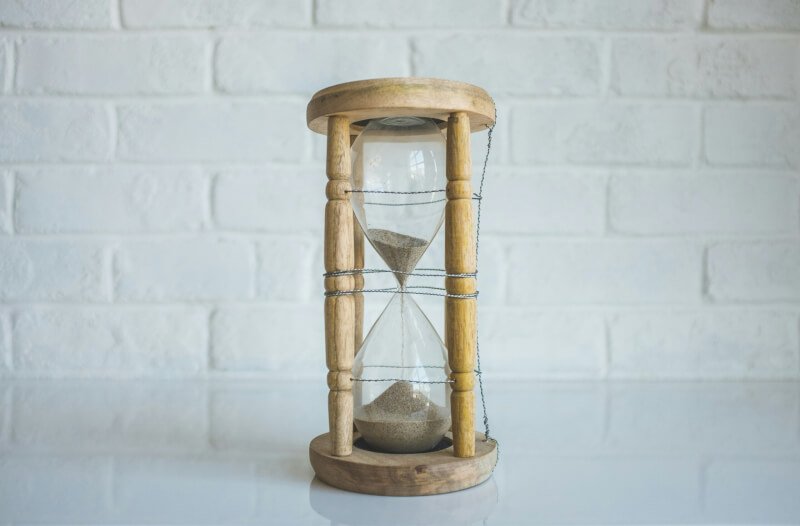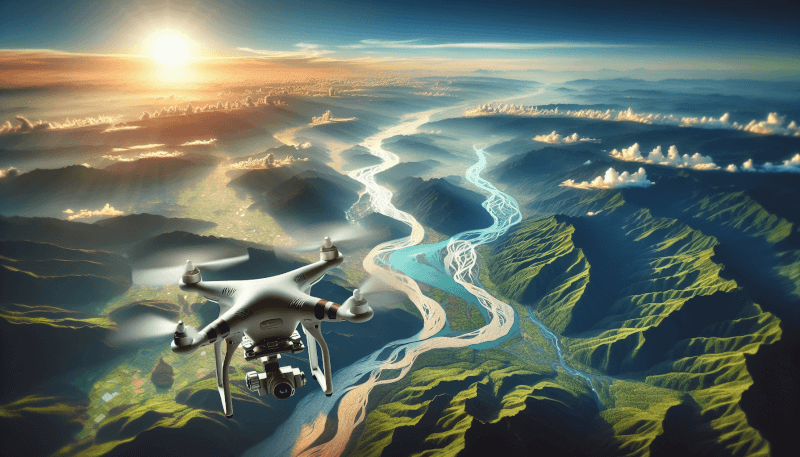Have you ever wondered how to capture stunning aerial time-lapse videos with your drone? Look no further! In this article, we will share with you the best techniques to create professional-quality footage that will leave your audience in awe. Whether you’re a beginner or a seasoned drone enthusiast, these tips and tricks will help you take your aerial videography skills to new heights. So fasten your seatbelt, prepare your drone, and get ready to elevate your videos to a whole new level.
Choosing the Right Drone
Consider the Camera Quality
When choosing a drone for capturing aerial time-lapse videos, one of the most important factors to consider is the camera quality. A high-resolution camera with good low-light performance will ensure that your time-lapse footage is sharp, detailed, and visually appealing. Look for drones that have a built-in camera with a high megapixel count, as well as features like a wide dynamic range and adjustable aperture. These features will allow you to capture stunning time-lapse footage even in challenging lighting conditions.
Look for Stability Features
Stability is crucial when shooting time-lapse videos with a drone. Look for drones that have built-in stability features such as a three-axis gimbal. A gimbal will help stabilize the camera and reduce unwanted motion blur, resulting in smoother and more professional-looking footage. Additionally, consider drones with advanced stabilization technologies like electronic image stabilization (EIS) or optical image stabilization (OIS) for even better results.
Evaluate Battery Life
Battery life is another important factor to consider when choosing a drone for aerial time-lapse photography. You’ll want a drone that can stay in the air for a significant amount of time to capture long-duration time-lapse sequences. Look for a drone with a longer flight time and consider purchasing extra batteries if needed. It’s also important to consider the charging time of the batteries, especially if you plan on shooting multiple time-lapse sequences in a day.
Preparing for the Shoot
Check Local Laws and Regulations
Before you take your drone out for a time-lapse shoot, it’s essential to familiarize yourself with the local laws and regulations regarding drone usage. Research the specific rules and restrictions for operating a drone in your area, including any permits or certifications that may be required. Additionally, be aware of any no-fly zones or restricted airspace that you should avoid to ensure a safe and legal drone flight.
Scout the Location
To capture the best aerial time-lapse footage, it’s crucial to scout the location beforehand. Visit the area where you plan to fly your drone and assess the surroundings. Look for interesting features, landmarks, or points of interest that will make your time-lapse footage visually appealing. Consider the lighting conditions at different times of the day and determine the best time to shoot. By scouting the location in advance, you can plan your shots and ensure you capture the footage you desire.
Plan the Shot Sequence
Before taking to the skies with your drone, it’s essential to plan your shot sequence. Visualize how you want your time-lapse video to look and consider the different angles and perspectives you can capture with your drone. Determine the duration of each shot and how many frames you want to capture per second. Having a clear plan in mind will make the shooting process more efficient and help you achieve the desired results in your time-lapse video.

Setting Up Your Drone
Use a Tripod or Landing Pad
When setting up your drone for a time-lapse shoot, it’s helpful to use a tripod or landing pad. This will provide a stable and level surface for takeoff and landing, especially in uneven terrain. A tripod or landing pad will also help protect your drone’s camera and gimbal from dirt, dust, and debris on the ground. Additionally, using a landing pad can make it easier to track your drone’s position during the time-lapse sequence.
Calibrate and Test the Gimbal
A properly calibrated gimbal is essential for capturing smooth and stable time-lapse footage. Before starting your shoot, take the time to calibrate and test the gimbal on your drone. Follow the manufacturer’s instructions for calibrating the gimbal, ensuring that it is balanced and functioning correctly. Test the gimbal’s movements to ensure it is stable and smooth, and make any necessary adjustments before beginning your time-lapse shoot.
Adjust Camera Settings
To achieve the desired look in your time-lapse footage, it’s important to adjust the camera settings on your drone. Experiment with different ISO settings, shutter speeds, and white balance to achieve the desired exposure and color balance. Consider using the aperture priority mode or manual mode to have more control over these settings. Additionally, consider enabling features like bracketing or exposure compensation to capture a range of exposures for later editing and post-processing.
Capturing Time-Lapse Footage
Select the Right Interval for Shots
The interval between each shot is crucial for capturing effective time-lapse footage. Depending on the subject and desired effect, you’ll want to choose an appropriate interval that suits the movement or changes you want to capture. For slow-moving subjects, such as clouds or sunsets, a longer interval of 10 to 30 seconds between shots may be suitable. For faster-moving subjects, such as construction or traffic, a shorter interval of 1 to 5 seconds may be necessary to capture the desired motion.
Utilize the Manual Mode for Exposure
When capturing time-lapse footage, it’s often best to use the manual mode for exposure. This allows you to have full control over the camera settings and ensure consistent exposure across all frames. Set the desired aperture, shutter speed, and ISO for the lighting conditions, and lock these settings throughout the time-lapse sequence. By using the manual mode, you can avoid exposure inconsistencies that may occur when using automatic exposure modes.
Use ND Filters for Proper Lighting
In bright or high-contrast lighting conditions, using neutral density (ND) filters can help achieve proper exposure in your time-lapse footage. ND filters reduce the amount of light entering the camera without affecting the color balance, allowing for longer exposure times. This can be particularly useful for capturing motion blur in subjects like flowing water or moving crowds. Experiment with different ND filter strengths to achieve the desired effect and maintain consistent exposure throughout the time-lapse sequence.

Flying Techniques for Time-Lapse
Fly Slow and Smooth
When flying your drone for time-lapse photography, it’s important to maintain a slow and smooth flight path. Avoid jerky or erratic movements that can introduce unwanted motion blur or jitters in your footage. Fly at a slower speed to give your camera more time to capture each frame and ensure a smoother transition between shots. Smooth and controlled movements will result in more professional-looking time-lapse footage.
Vary Altitude and Angles
To add visual interest and dynamism to your time-lapse footage, vary the altitude and angles at which you fly your drone. Experiment with flying at different heights to capture unique perspectives of your subject. Consider getting closer to the ground or ascending to higher altitudes to capture the desired effect. By changing the angles and altitudes, you can showcase different aspects of the scene and create a more engaging time-lapse video.
Consider Motion Paths
Another way to add creativity to your time-lapse videos is to consider using motion paths. Many drones have intelligent flight modes that allow you to program predefined flight paths and movements. Experiment with these modes to create interesting and dynamic shots. For example, you can program your drone to fly in a circle around a subject or follow a linear path through a landscape. These programmed movements will add an extra layer of visual interest to your time-lapse footage.
Editing Software for Time-Lapse Videos
Import and Organize Footage
Once you have captured all the necessary time-lapse footage, it’s time to start editing. Start by importing the footage into your chosen editing software and organize it in a logical sequence. Creating folders or bins for different shots or scenes can help keep your footage organized and make the editing process more efficient. Ensure that all the files are properly labeled and arranged before moving on to the next step.
Adjust Speed and Frame Rate
One of the key steps in editing time-lapse footage is adjusting the speed and frame rate. Determine the desired duration of your time-lapse video and adjust the speed accordingly. For example, if you want to condense one hour of footage into a 30-second video, you’ll need to increase the speed by 120 times. Additionally, consider the frame rate at which you want your time-lapse footage to play. Common frame rates for time-lapse videos are 24 or 30 frames per second (fps), but you can experiment with higher or lower frame rates to achieve different effects.
Apply Color Corrections and Filters
To enhance the visual appeal of your time-lapse footage, apply color corrections and filters in the editing software. Adjust the overall color balance, saturation, and contrast to achieve the desired look. Consider applying specific filters or presets that can add a unique style or mood to your footage. Experiment with different settings and adjustments until you achieve the desired aesthetic for your time-lapse video.

Adding Music and Sound Effects
Choose Appropriate Background Music
Adding background music to your time-lapse video can enhance the overall viewing experience and set the mood for your footage. Choose music that complements the subject matter and the desired tone of your video. Consider the pace and rhythm of the music to match the speed and tempo of your time-lapse footage. Pay attention to copyright restrictions and ensure that you have the necessary rights or licenses for the music you choose to use.
Sync Footage with Music Beats
For a more engaging and synchronized viewing experience, try syncing your time-lapse footage with the beats or rhythm of the background music. This can be done by aligning specific events or movements in your footage with the corresponding beats or musical accents. This synchronization can create a more immersive and dynamic viewing experience for your audience.
Enhance with Sound Effects
In addition to background music, you can enhance your time-lapse video with sound effects. Consider adding natural ambient sounds, such as birds chirping or waves crashing, to create a more immersive experience. You can also add sound effects that complement specific actions or movements in your footage. For example, adding a “woosh” sound effect when the camera pans or a “click” sound effect when a new frame appears. These sound effects can add depth and realism to your time-lapse video.
Creating Smooth Transitions
Add Fade In and Out Effects
To create smooth transitions between shots in your time-lapse video, consider adding fade in and out effects. A fade in effect gradually increases the visibility of the next shot, while a fade out effect gradually decreases the visibility of the current shot. These effects help create a seamless and visually pleasing transition between different scenes or shots. Experiment with different durations and timings for the fade in and out effects to achieve the desired effect.
Use Crossfades between Clips
Another technique for creating smooth transitions is to use crossfades between individual clips or frames. A crossfade transitions from one clip to the next by simultaneously fading out the current clip while fading in the next clip. This technique helps blend the two shots together and creates a seamless transition. Adjust the duration and timing of the crossfade to ensure a smooth and natural transition between frames.
Apply Transitions to Eliminate Jitter
Jitter or sudden jumps in the footage can occur when capturing time-lapse sequences, especially if there are slight differences in camera position or exposure between frames. To eliminate these jitters and create a smoother viewing experience, consider applying transitions between frames. Transitions like zoom in or out, slide, or pan can help mask the small differences between frames and create a more visually pleasing time-lapse video.

Enhancing Time-Lapse Videos with Effects
Add Pan and Zoom Effects
To add visual interest and movement to your time-lapse video, consider adding pan and zoom effects. These effects can give the illusion that the camera is moving within the scene, adding a dynamic and immersive element. Experiment with panning across a landscape or zooming in on a specific subject to create a more engaging viewing experience. Use these effects sparingly and strategically to avoid overuse or distraction.
Create Tilt-Shift Effect
The tilt-shift effect is a popular technique for adding a miniature or toy-like aesthetic to your time-lapse footage. This effect selectively blurs certain areas of the frame while keeping others in focus, creating the illusion of a shallow depth of field. The result is a unique and visually striking look that can add a whimsical or dreamlike quality to your time-lapse videos. Explore tutorials or plugins specific to your editing software to achieve the tilt-shift effect.
Apply Stabilization
Even with the best flying techniques, some slight camera movements may still occur in your time-lapse footage. To further enhance the smoothness and stability of your video, consider applying stabilization effects in post-production. Many editing software options have built-in stabilization tools that can reduce camera shake and unwanted motion. Experiment with different stabilization settings to achieve the desired level of smoothness in your time-lapse footage.
Exporting and Sharing Your Time-Lapse Video
Choose the Right Export Settings
When exporting your time-lapse video, it’s important to choose the right export settings to ensure optimal quality and compatibility. Consider the platform or medium where you plan to share your video and select the appropriate file format and dimensions. Generally, exporting in a high-quality format such as MP4 or MOV with a resolution of at least 1080p is recommended. Pay attention to the bitrate settings to balance file size and video quality.
Upload to Online Platforms
After exporting your time-lapse video, it’s time to share your creation with the world. Consider uploading your video to popular online platforms for maximum exposure and reach. Platforms like YouTube, Vimeo, or Instagram allow you to showcase your time-lapse video to a wide audience and engage with fellow drone enthusiasts and videographers. Pay attention to platform-specific guidelines and recommendations for file formats, aspect ratios, and video length.
Promote and Share on Social Media
To further promote your time-lapse video, leverage the power of social media. Share your video on platforms like Instagram, Facebook, or Twitter to reach a broader audience and potentially gain recognition for your work. Be sure to include relevant hashtags and captions to attract viewers who are interested in time-lapse videos or drone photography. Engage with the community by responding to comments and feedback, and consider collaborating with other creatives to expand your network and reach.
In conclusion, creating professional-quality aerial time-lapse videos with your drone requires careful consideration of factors like camera quality, stability features, and battery life. Preparing for the shoot involves checking local laws, scouting the location, and planning the shot sequence. Setting up your drone with a tripod or landing pad, calibrating the gimbal, and adjusting camera settings are essential for capturing optimal footage. Techniques like selecting the right interval, utilizing manual mode, and using ND filters contribute to achieving stunning time-lapse results. Flying techniques, editing software, adding music and sound effects, creating smooth transitions, enhancing with effects, and properly exporting and sharing your time-lapse video are all important steps to create professional-quality aerial time-lapse videos. By following these guidelines and continuously practicing and experimenting, your aerial time-lapse videos will captivate audiences and showcase the beauty of the world from above.



